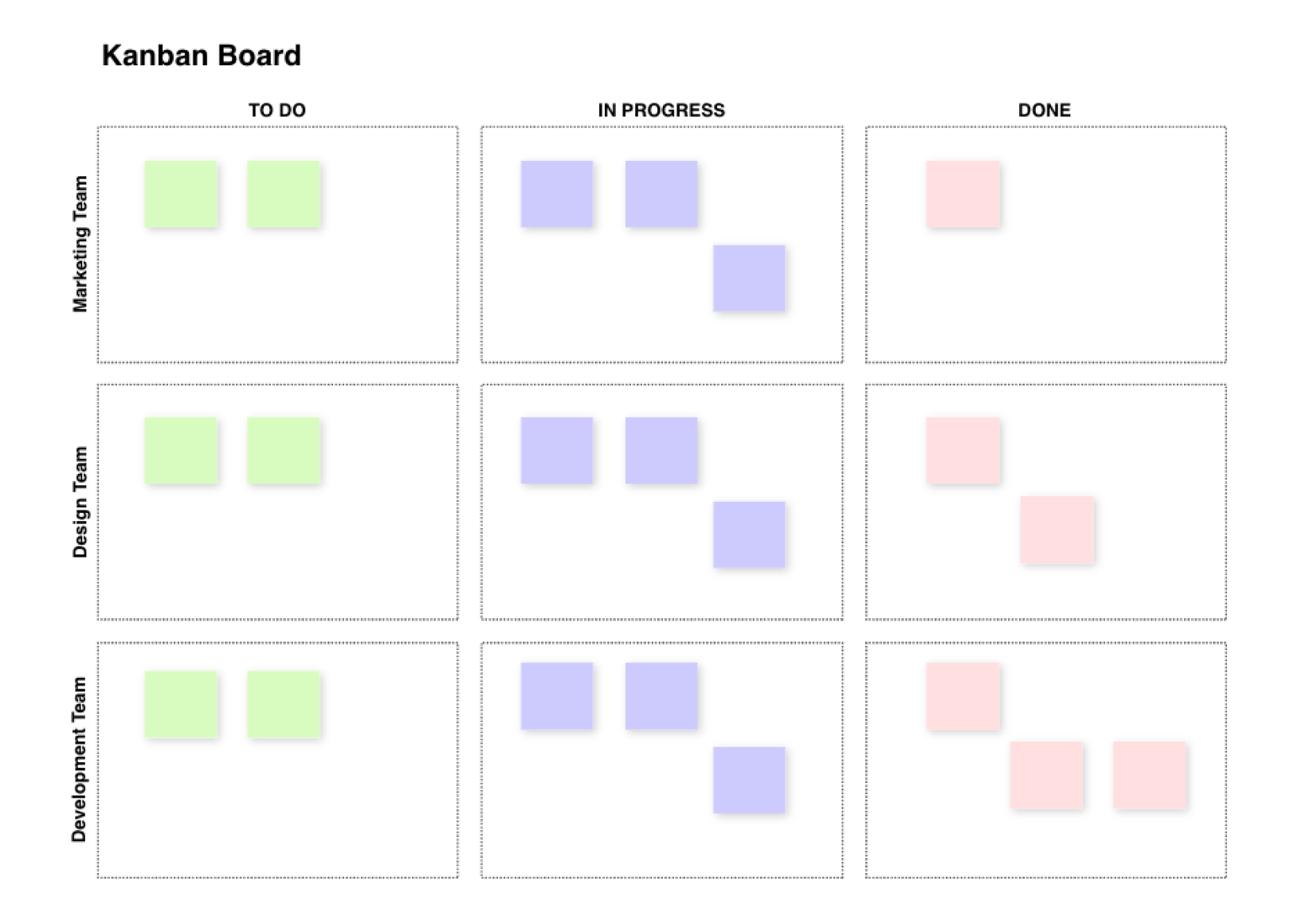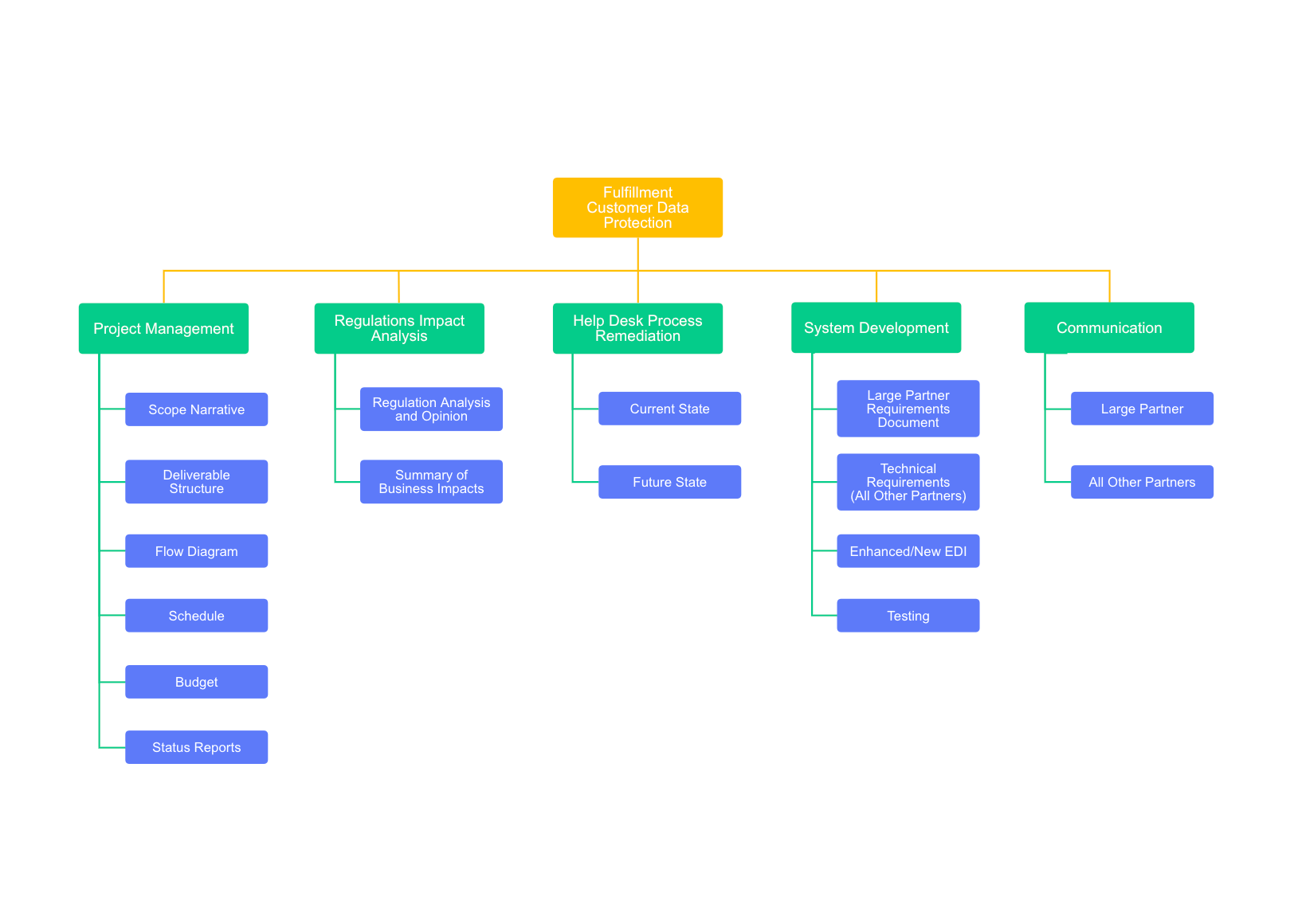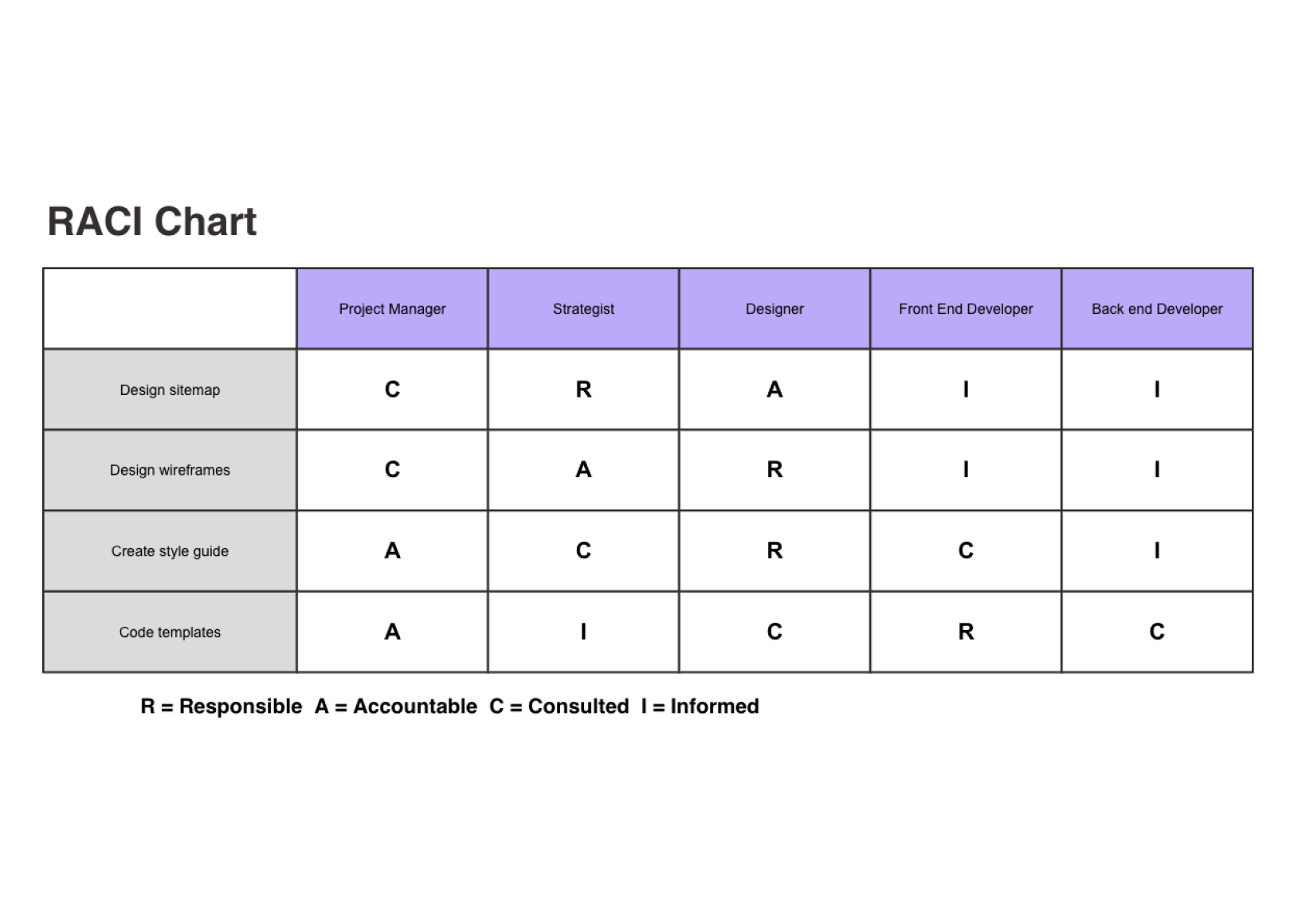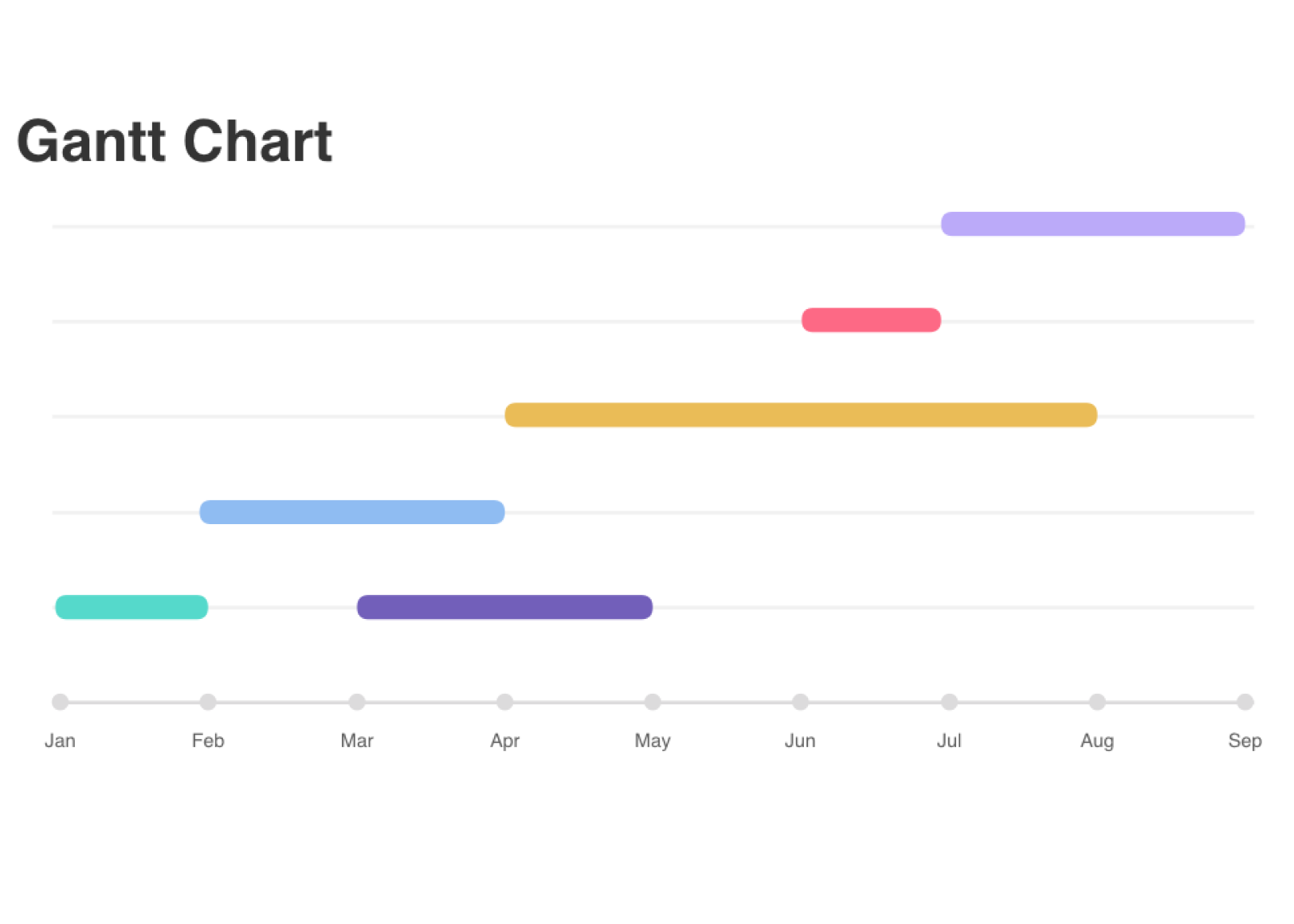The 5 steps of the project management lifecycle explained
Georgina Guthrie
January 06, 2022
Whether you’re planning a months-long journey or a day of sightseeing, having a plan helps you pace yourself. The same goes for planning a project. Knowing key milestones helps you determine what needs to be done and when. Not only does this make it easier to assign resources, plan budgets, and ensure timely delivery, but emotionally, it makes the whole task more manageable because you can tackle it piece by piece. The conventional name for this planning is the ‘project management lifecycle.’
Before we tell you the benefits, let’s take a quick look at how poor management can impact your project.
How poor planning can derail your project
Communication breakdowns
One of the biggest threats to a project is a breakdown in communication. This occurs when you don’t have a structured plan for delegating tasks or reporting your progress. The end result? No one really knows who’s doing what, when their deadlines are, or what’s expected of them.
Moreover, frequent communication breakdowns take an emotional toll and, over time, can build frustration and resentment.
Wasted money and resources
A lack of structure means you won’t be able to assign budgets and resources effectively. The more you plan and evaluate a project, the easier it is to forecast the requirements and outcome. So, if you skip these important steps, you have a high risk of incorrectly estimating what resources you’ll need to complete the project. Throw a few communication breakdowns into the mix, and you’ll waste precious time and money fixing preventable issues.
Project failures
Missing a deadline or going over budget isn’t just an inconvenience. You’ll have to answer to stakeholders — who won’t be happy — and your project could be classed a failure.
OK, I’m convinced. How do I figure out my project management lifecycle?
We’re glad you asked! A project management lifecycle consists of five phases: initiation, planning, execution, controlling/monitoring, and closure.
As with most project management processes, a project lifecycle diagram is an excellent place to start. Visualizing your data gives you a bird’s-eye view of everything in one go. It also provides a map of your project with key stages and dates outlined for everyone to see.
You can create a diagram by hand or in MS Office, but your best bet is to use a diagramming tool that lets you start from a template, collaborate with your team, and share easily from your browser. That way, everyone can have a real-time view of your project, and you don’t have to worry about formatting or hunting around for different versions.

Stage 1: Initiation
Once you’ve got all your tools lined up, you’re ready to start planning your lifecycle.
First up, it’s the initiation phase. This is where you host a kick-off meeting to work out your project’s reason for existing. What’s your business problem? How will you solve it? Is it feasible? What’s the scope, and what are the major deliverables? And who needs to be involved? You may want to map out some SMART goals to help organize your thinking.
Many projects also require investment, whether it’s a commitment of resources from your boss or financial support from stakeholders. You’ll need to organize this data and present it as a well-thought-out project proposal, and then turn that info into a statement of work. It takes a lot of time upfront, but as with everything, the more you prepare, the easier your project will be later on.
Stage 2: Planning
Next is the planning stage. Now is the time to break down your project into manageable tasks based on your statement of work.
Assess your resources, budget, and schedules, and translate these components into a schedule. You may find it helpful to create a workflow diagram for this stage, which will give you a top-down view of the individual project tasks and the flow of information between individuals or teams. It’ll also help you figure out the order in which specific tasks must be done.
Make an effort to involve your team at this stage to hear their thoughts on capacity and timings. Decide whether you want to employ a bottom-up or top-down management approach — or something in between. A good rule of thumb is to choose a bottom-up approach if it’s a long, complex project. If you’re on a tight timeframe, then go top-down.
Here’s a ‘planning stage’ checklist:
- Draft a project plan. Include all your timings and key dates.
- Make a workflow diagram. Include timeframes, scope, and possible constraints.
- Create a financial plan. List investments, estimates, and estimated returns.
- Gather resources. This could include assembling a team and assigning roles, liaising with other departments, enlisting external help, and working out what kind of software or training your team needs to perform tasks efficiently.
- Identify the risks. Prepare for obstacles by listing the financial, logistical, or scheduling risks and coming up with contingency plans.
Stage 3: execution
Here’s the exciting part where your project comes to life. If you’re a manager, it’s your job to oversee the timeline and budget and ensure everyone sticks to the plan. At the same time, you must pay close attention to potential problems and adapt quickly when you’re thrown a curveball.
Likewise, you’ll need to assign projects to your team members and brief everyone to make sure they fully understand all expectations. Good organizational communication skills are essential here: make sure your instructions are accurate, easy to understand, and in line with business objectives.
Stage 4: monitoring and maintenance
After project kick-off, you need to keep track of your team and monitor the progress of your plans. It’s important to find out whether everyone is coping with the work assigned to them, working to a high standard, and feeling motivated. As a project manager, it’s up to you to decide when it’s necessary to reallocate work or make adjustments to the project schedule.
Even with excellent planning, you’ll occasionally run into external delays. Sometimes, it takes longer than expected to get signoff on critical elements from stakeholders outside the company, or suppliers and contractors can’t uphold an agreement. You’ll also need to keep track of budgets and resources and stay in communication with stakeholders to adapt to these hurdles.
If you’re developing software or a new product, this stage will also include iterative prototype testing, development, and review.
Stage 5: project closure
Congratulations! That’s a wrap… almost. Before you can really call it a day, you need to officially close the project and review it to evaluate its success.
- Did your project meet its goals? And were they delivered on time and on budget? You can use this data to inform subsequent projects, so make it detailed and present it in a format that’s easy to understand. Visually, via a diagram or chart is best.
- Did your team members perform to the best of their ability? If not, is it a performance issue on their part, or could your briefing and support have been better?
- Have you done all your housekeeping? Make sure to archive all your documentation (in case you need it at a later date) and prepare your reports to present back to the wider team and stakeholders.
Project management tools for strategy and planning
As you embark on a project, you have many options for structuring the phases of the project lifecycle. Choosing a specific approach will help you bring consistency to the project and organize information in a way that makes sense to the entire team. Here are our recommendations for project management tools to consider as you develop a strategy.
Kanban system
A Kanban board is a system for organizing your workflow by creating prioritization categories. The basic layout is a chart with columns labeled as To Do, In Progress, Delayed, and Done. Depending on the needs of the project, you could also include a section for tasks that need reviewing or testing.
The goal is to visualize team progress and make sure you’re focusing your efforts and resources in the right places. While Kanban systems originated as physical boards, you can use a Kanban diagram to record your progress digitally.

Work breakdown structure
A work breakdown structure (WBS) diagram is a hierarchical chart of a project and its deliverables. This diagram is a great resource for visualizing the scope of a project or sorting roles by team.
A WBS diagram is essentially a vertical flowchart with categories listed horizontally. Under each category, you can include the tasks or deliverables needed to complete a specific section of the project under each category. A WBS is beneficial for event chain management (ECM), which involves identifying critical event chains to mitigate risks or delays in the project.

RACI chart
A RACI chart is another tool for supervising the roles and responsibilities of your project team. The chart includes columns listing the roles or departments involved and rows listing their assigned tasks. In the corresponding cells, you use a letter code to identify the status of an assignee’s involvement. While standard codes include Responsible (R), Consulted (C), and (Informed), you can choose whatever identification method works for you.

Gantt chart
Designed for accurate planning, Gantt charts are a color-coded schedule of tasks your team needs to work on. This simple bar chart shows the timespans of different tasks and where they overlap, so you can easily keep track of deadlines. 
Final thoughts
The project management role is synonymous with multitasking. There are schedules to organize, team members to keep motivated, and budgets to balance — and that’s just the tip of the iceberg. As with all projects, knowing your destination and how to get there helps you and your team pace yourselves. Working out your project management lifecycle, and presenting it in a clear, accessible way, is just one step towards ensuring the project is sustainable with a clear path to success.
This post was originally published on May 15, 2019, and updated most recently on January 6, 2022.

